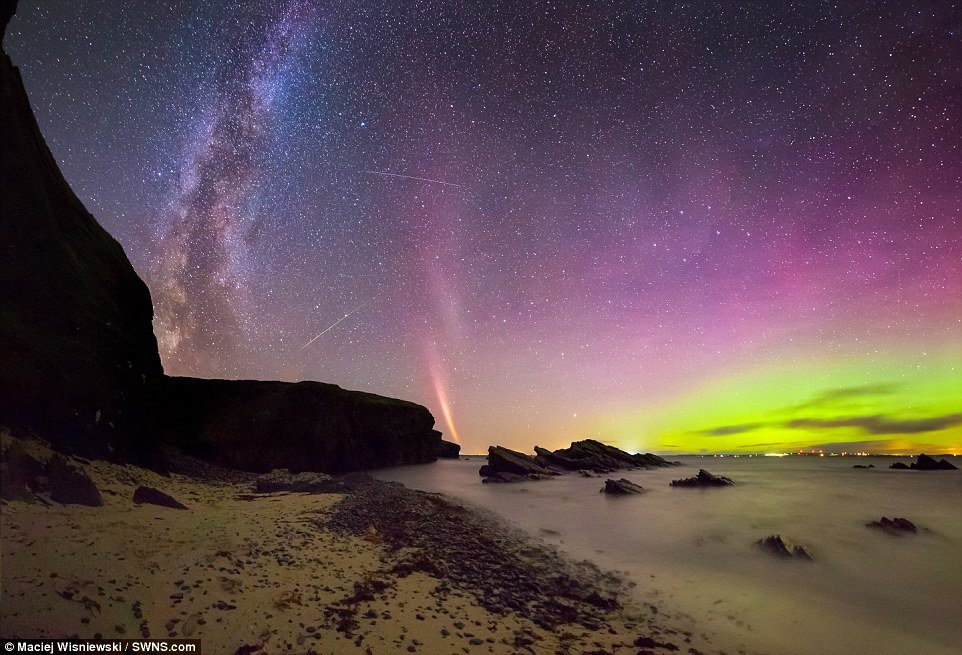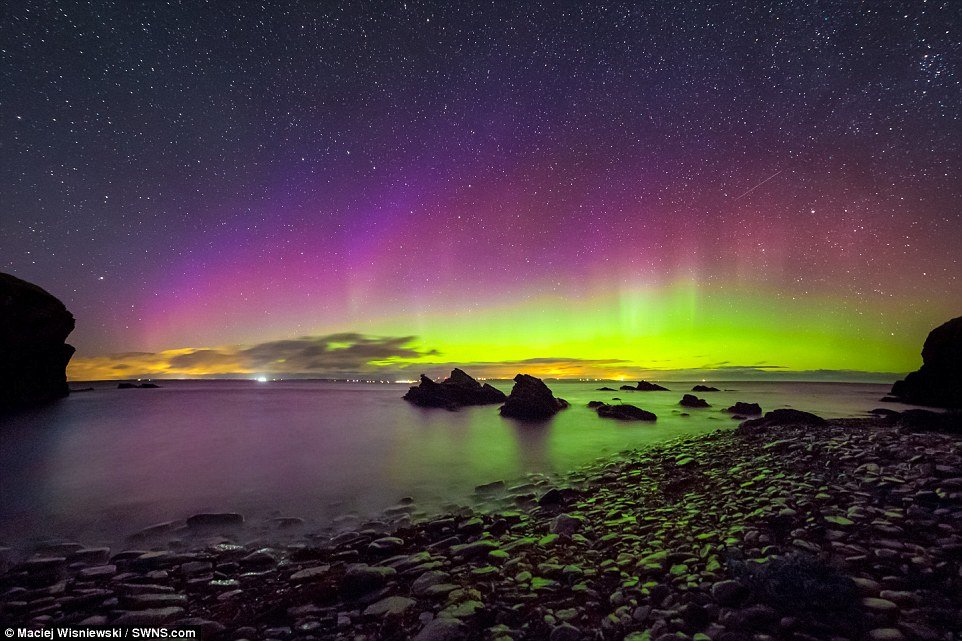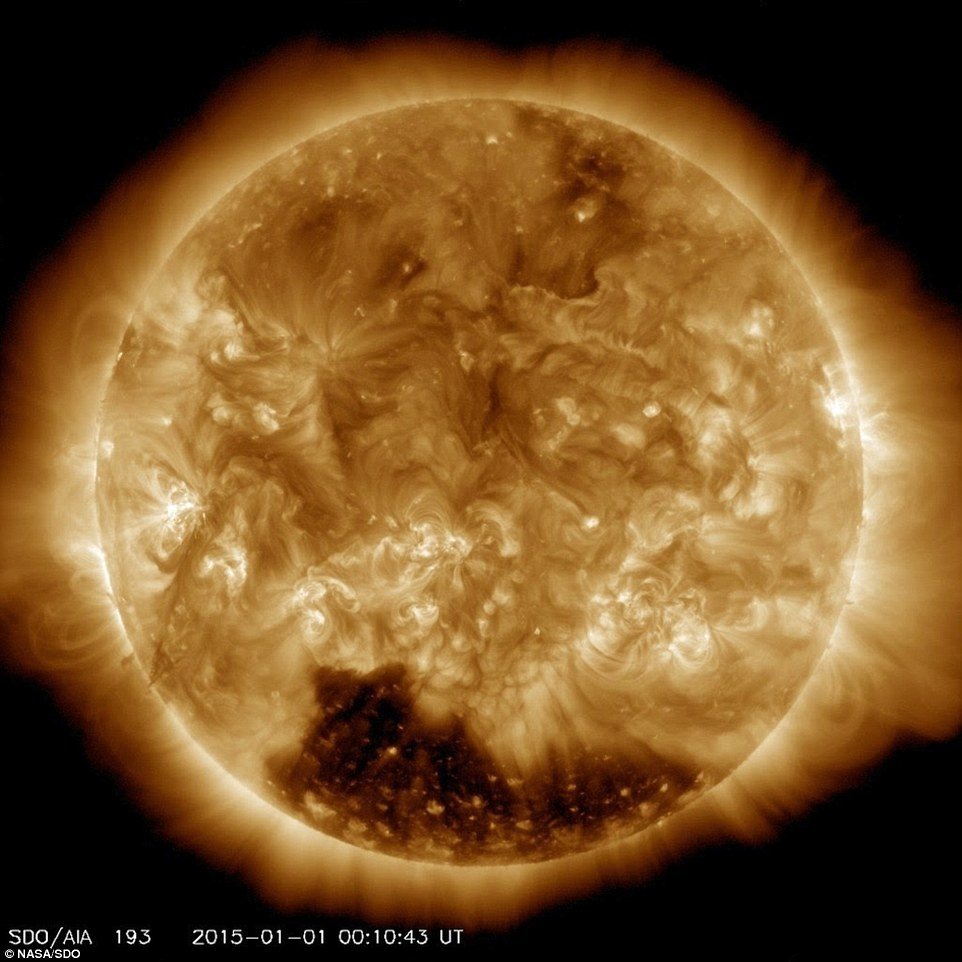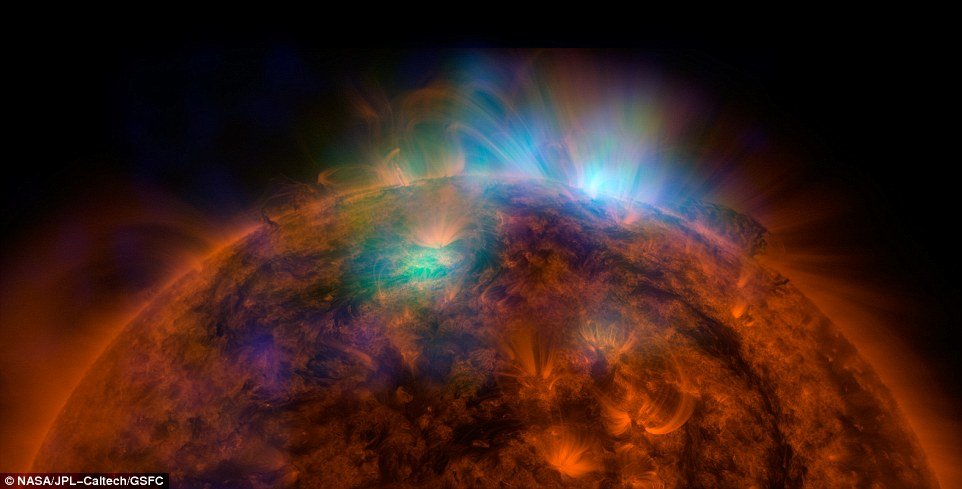
The storm was caused by a hole in the outermost layer of the sun, opening the magnetic field up to stretch further than usual, which resulted in a gradual increase in the solar wind.
An increase in solar activity means the chances of seeing the Northern Lights, or Aurora Borealis, tonight in places like Canada, Scandanavia, Scotland and even northern England and are greater than usual.
The British Geological Survey, Aurorawatch UK and US body Space Weather Prediction Centre have all reported heightened opportunities of spotting the aurora, because a hole in the sun's outer layer is facing Earth.
'A G2 (Moderate) Geomagnetic Storm Alert was issued at 2048 UTC (4:48 pm ET) on 28 September as effects from a large coronal hole high speed stream continue,' the National Oceanic and Atmospheric Administration (NOAA)' Space Weather Prediction Centre said.
It added, however, that the storm was unlikely to have an impact on electrical infrastructure or power grids.
The barrage of charged particles from the sun is expected to continue until Saturday when the activity will die down, space weather reports have said.
The storm, which started yesterday, has already treated some people in the north of Scotland to a magnificent display.
The British Geological Survey (BGS) told the BBC: 'A very large, centrally located coronal hole has rotated around the sun's surface so that it is now facing the Earth.
'This means that a stream of fast solar wind is currently hitting the Earth's magnetic field and causing an increase in geomagnetic activity.'
BBC Weather said the aurora could be visible from east Scotland, Northern Ireland and northern England.

The lights are created when charged particles from the sun enter Earth's atmosphere.
Usually the particles are deflected by the Earth's magnetic field, but some enter the atmosphere and collide with gas particles.
These collisions emit light, in many colours although pale green and pink are common.
The Met Office has also warned the storm could cause some disruptions to technology.
Geomagnetic storms are more disruptive now than in the past because of our greater dependence on technical systems that can be affected by electric currents.
'Space Weather describes disturbances in the Earth's upper atmosphere and magnetic field which have a variety of impacts on mankind and our technology.'
But since the G2 level of a geomagnetic storm is considered 'minor' these should be minimal, it said.
The storm was started by a hole in the sun's outermost layer - the corona.
Coronal holes are regions of the corona where the magnetic field reaches out into space rather than looping back down onto the surface.
The sun's magnetic field lines normally loop back to its surface and reconnect there. But in a coronal hole, the lines are altered and can instead stretch out into space.
Coronal holes were first seen in images taken by astronauts on board NASA's Skylab space station in 1973 and 1974.
Occassionally these holes can generate storms on the sun's surface.
This comes as star gazers will be treated to another spectacular display this month with the annual Orionids Meteor shower.
This year the meteor shower is expected to rain down the greatest number of meteors before dawn on October 21.





Reader Comments
to our Newsletter